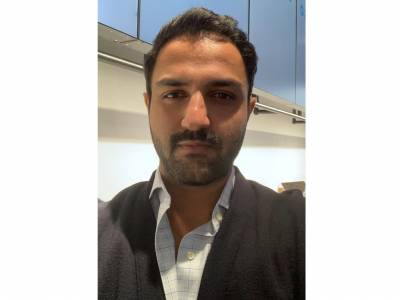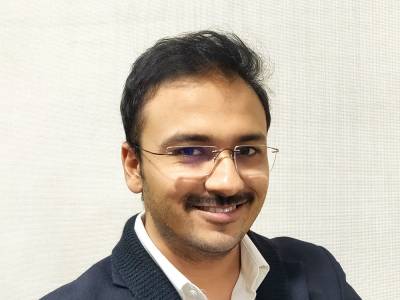Content Marketing ≠Long format Ads: Zubin Sarkari
When Maybelline NY came to us back in 2016, they did what all brands tend to do: They said that they wanted to push their products to our massive audience of Indian women.
Traditionally, the brand would have bombarded the airwaves and print with ads that they hoped would reach and impact its target audience. Instead, we did it through an 8-video Makeup Basics series that crossed 40 million video views across Facebook and Youtube.
The sad reality we face today is that even though marketing has rapidly evolved over the last 20 years and opened doors to real-time 2-way communication between brands and consumers, we still rely heavily on one-sided traditional advertising methods of communication. And what is vitally lost in this old process are the needs of the audience.
Traditional advertising has always focused on the Product, and has been enslaved by the medium. Whether its print, television, radio, or outdoor, all mediums have been shackled by their inherent barriers like Geography, time, access, and distribution. These posed as insurmountable barriers between the brand, and the audience.
The advent of digital media platforms has lifted all these obstacles, and cleared the way for the focus to fall squarely on the audience, and its needs. We can now get into the real crosshairs of audience data, and get an accurate picture of their personas to their behaviours & needs. With social, digital, and online media, now we know who we speak with, what they want, and figure out how we can add value to their journeys. We can speak with them directly, and can truly personalize, address concerns, and make a difference to their lives. And Content Marketing is the perfect vehicle for this journey.
The core of Content Marketing is in how content can drive benefit for the audience. With most of branded content, it ends up being an ad, badly disguised as a story. It does not enrich the viewers’ life in any way, and we tend to underestimate how much this can impact the brand. When people benefit, they believe, and they trust, and the process of driving sales becomes a lot simpler.
And yet, most brands still continue to make long format ads, without substance, because “that’s how we have always done it.”
The newer generations of digital citizens are not welcoming nor forgiving of blatant advertising. They are also a lot more discerning of the content they consume. It was estimated that 2/3rds of millennials have ad blockers installed, to the extent that Deloitte calls the generation the “ad-lergics”.
When we spoke to our target audience before creating the video series for Maybelline, we realized that the main barrier was not “what products should I use?”, but “How do I use all these makeup products?”
What we did with our content, thus, was that we integrated the products into an educational video series that actually added value to our audience’s lives. We helped them to learn how these makeup products - be it foundation, mascara, lipstick or blush - could easily be blended into their daily lives.
And sales jumped.
This is the essence of content marketing.
Unlike traditional advertising, it is no longer a world of product push. Rather, it is a world that drives product awareness and adoption, through an audience-first approach. With content, you have the unique ability to tell a story about YOU, and not about ME.
So, what goes into a success story?
- Why are you creating content / What do you aim to achieve?
- How do you add value to the user, as a brand?
Most often, for the first question, we hear “sales”. Most brands don’t know the answer to the second question.
Advertising is the old answer to the first question. Content marketing is the new answer to both questions.
Value is not decided by brand, it is decided by the user, and they must be involved in all your research!
Storytelling is a buzzword of the content marketing conversation, and it’s rather a good word to use, if you’re using it right.
A story is told to a listener, to create an emotional reaction. The storyteller reads the listeners and adapts to them. You would never tell a scary story to a little child just because you wanted to tell a story about gore and spooks. So why would you tell your audience a fairy tale about a product without it being important to them?
It’s time we tell the right tales to the right folk, and maybe the “ad-lergics” would not be as disgruntled by the brands around them, and much more interested in hearing them out. It’s about time we treat content marketing as an art of creating benefit, and not as another way to package advertising.
Zubin Sarkari is Founder, Glamrs, India’s largest digital video network for women
Zubin Sarkari combined his background of management, fashion, media and video production to launch GLAMRS in 2012. In 1991, he started his career with the television programming giant, Videofashion, New York, working his way up to Managing Director. Recognising the potential of the internet and the growing video space within, he realised the massive opportunity that presented itself in digital media.
Zubin cofounded Glamrs in a bid to engage the largely untapped 10,000 crore potential digital media market. He found that Indian woman had seamlessly and massively adapted to the digital medium, and he sought to put his 2-decade long experience and education of content programming to use. He identified their engagement patterns and formulated a strategy for his audience base. This was spirited by a fire to create, curate and distribute the right and relevant content that young Indian women would want to consume.





















Share
Facebook
YouTube
Tweet
Twitter
LinkedIn